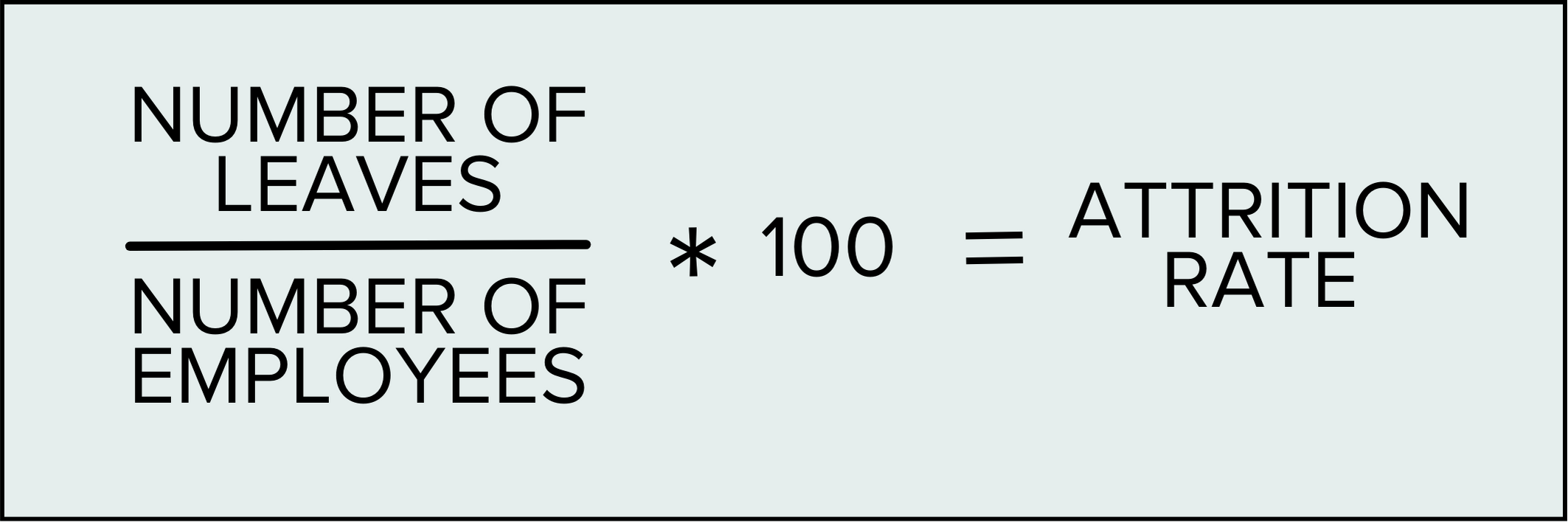It is vital for businesses to regularly keep track of the number of employees a company loses within a certain period. Reduction of the workforce due to attrition could permanently alter the workflow and culture of the entire organization.
Attrition reduces an organization’s workforce due to retirement, resignation, or removal without a plan to replace the occupancy. Also referred to as downsizing or churn rate, attrition is the gradual reduction in staff numbers.
We will discuss the causes, consequences, and prevention of employee attrition and how it differs from other forms of staff shortages and reductions. Additionally, using the rate calculator, you can determine if attrition is a problem for your organization.
Causes of Attrition
Attrition can be good for an organization because a business can decrease labor costs without dismissing staff. Therefore, it is essential to understand the causes and different types of downsizing that may arise.
There are two main types of company attrition:
1. Voluntary – occurs when an employee leaves on their own accord. Examples can include any of the following.
◦ New opportunity
◦ Professional reasons
◦ Personal reasons
◦ Demographic relocation
2. Involuntary happens when a company decides to remove staff members and positions. This decision is due to the following reasons.
◦ Layoff
◦ Death of an employee
When an employee exits, sometimes the reasons are beyond a business’s control. However, based on 150,000 exit interviews, 68% of employees left a company due to controllable factors. More importantly, 72% claim they were unhappy with the quality of the retention effort.
This data suggests that business leaders are missing the mark when it comes to meeting the needs of their staff and not providing overall job fulfillment.
Consequences of Attrition
Unless your company is prepared when employees retire or quit, a dwindling workforce can be costly, especially if the individual’s history with the company is long-term.
If an employee has been with the company for years and decides to resign, the organization can lose a wealth of knowledge and experience. Seasoned employees are more familiar with the company’s best practices, policies, and objectives.
The combined costs of recruiting, interviewing, training, and loss of productivity equates to anywhere from one-half to two times the individual’s annual salary. Even when 52% say their manager could have prevented their departure.
Another repercussion of an employer not backfilling a vacancy could be a significant workflow increase for the employees who remain after the departure. Production could suffer, particularly if other staff members widely relied on the role.
The added workload to the established team could result in a decrease in overall company morale, most notably when the remaining employees have similar feelings and opinions about the company’s response.
Calculate Employee Attrition Rate
Understanding a company’s attrition rate can be a key performance indicator (KPI) for the business overall.
The following is a formula for measuring the number of employees who have left compared to the average number of employees within a company, multiplied by 100.

A high churn rate means a company frequently loses employees, while a low rate indicates employees stay longer.
If your company’s churn rate is consistently high, you should investigate and develop a strategy to retain your workforce.
Turnover and Layoffs
Other forms of employee exits are turnover and layoffs. Although these terms are similar, they both have distinct differences.
Turnover refers to a scenario in which an employer replaces employees who have left the company. Like downsizing, turnover can be voluntary or involuntary, and backfilling the role is the primary differentiation.
Layoffs are an entirely different situation. When a company is in a challenging financial crisis, it must dismiss employees (who may be performing as directed) with no immediate plan to re-fill those positions.
Laying off employees results in attrition as long as the company doesn’t hire as many new employees as were laid off.
Preventing Attrition
Since we have concluded attrition can be costly and demoralizing for an organization, it is within the employer’s best interest to listen and research the reasons behind a resignation or termination.
Figuring out why employees are leaving an organization is critical. Understanding this valuable component is why many businesses decide to perform an exit interview with each individual who leaves the organization voluntarily or involuntarily.
Lack of job satisfaction is one of the most common factors for employee attrition. Employees want to enjoy where they work.
Another way to prevent attrition is to provide an excellent work-life balance. Allowing benefits such as working remotely and a flexible schedule can go a long way to enhance employee retention.
Finally, employees need to have a manager who is willing to go to bat for the benefit of their staff. Good communication is crucial and should be the main priority for a business to enhance team connection and make an employee feel valued.
Besides recruiting the best people for your company, you also have to nurture and engage your talent to prevent them from leaving. Taking these steps will decrease employee attrition and provide a better overall job experience for the entire organization.
How FINSYNC Can Help
FINSYNC allows you to run your business on One Platform. You can send and receive payments, process payroll, automate accounting, and manage cash flow. To learn more about how we can help your business start, scale, and succeed, contact us today.
